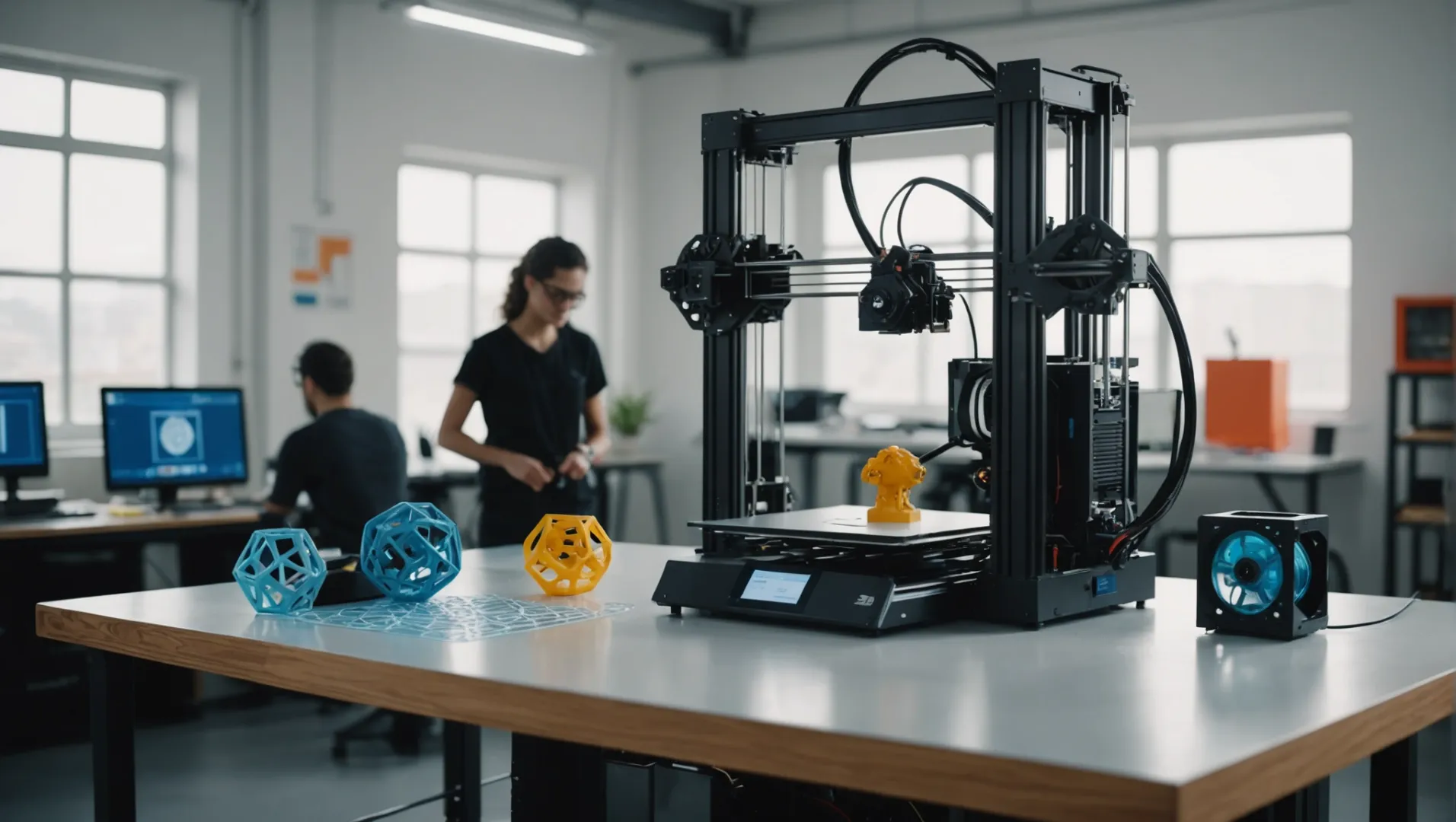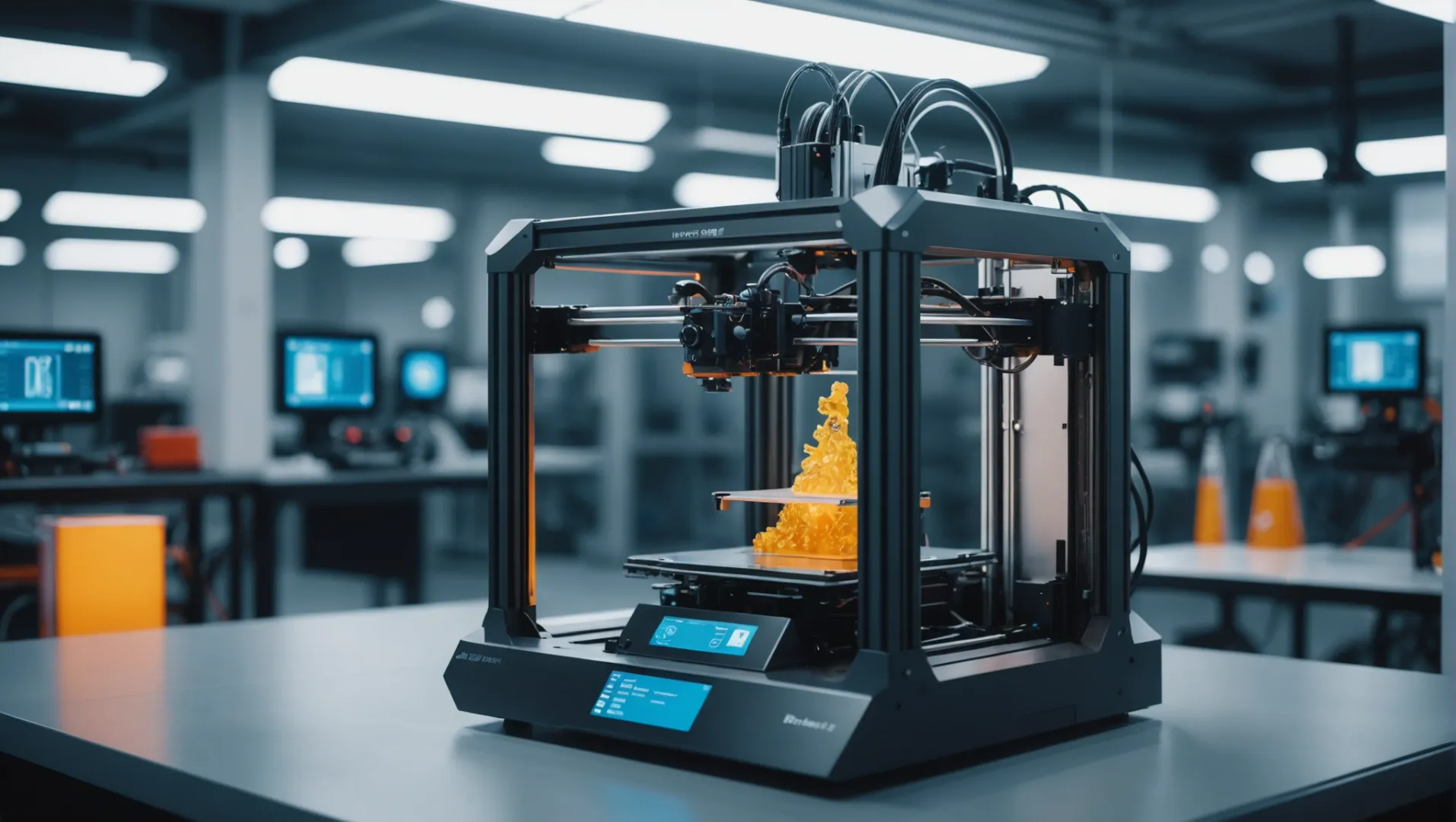
The world of 3D printing is nothing short of magical! It’s a blend of imagination and technology that turns dreams into reality. But as I dive deeper into this fascinating field, I can’t help but wonder—why does it feel like we’ve hit a wall in innovation?
3D printers haven’t really stagnated in innovation. However, the pace has slowed. Technically, material limitations and challenges in speed – precision balance and multi – material printing still exist. High costs of equipment, materials and maintenance also hold it back. Software is another hurdle, as professional design software is hard to use and model acquisition is inconvenient. Market demand is insufficient in some sectors and application range is limited. But continuous efforts are being made to overcome these and drive further innovation.
In the sections ahead, I’ll take you on a journey through the impressive advancements we’ve made, the hurdles we’re still facing, and what the future might hold for this transformative technology.
3D printing technology hasn't improved much over the years.False
3D printing has advanced in speed, materials, and applications significantly.
What Are the Latest Advancements in 3D Printing Technology?
From aerospace to healthcare, 3D printing continues to revolutionize industries. What’s new in this groundbreaking tech?
Recent advancements in 3D printing are remarkable. The speed has been enhanced via parallel printing. A wider range of materials like ceramics and carbon fibers are available. Precision has improved with advanced tech and software functions have been optimized, such as better CAD/CAM integration. These improvements expand its applications across various industries, from medical to electronics, demonstrating the continuous development of 3D printing technology.

Speed and Efficiency: A Breakthrough in Printing
One of the most notable advancements in 3D printing technology is the remarkable increase in printing speed1. Modern techniques, such as continuous and parallel printing, have enabled machines to operate at speeds up to 500-600 mm/s, a vast improvement over earlier models. This leap in efficiency is crucial for industries requiring rapid prototyping and production.
| Year | Average Speed (mm/s) |
|---|---|
| 2010 | 50-100 |
| 2023 | 500-600 |
Diverse Material Options: Expanding Possibilities
The variety of materials available for 3D printing has expanded significantly. Beyond the conventional plastics, new options include advanced polymers, metals, composites, and even biocompatible substances. These materials allow for more robust and versatile applications, from lightweight aerospace components to custom medical implants.
Precision and Resolution: Achieving Greater Accuracy
Advancements in hardware have enhanced the precision of 3D printed objects. High-resolution extruders and improved motion systems contribute to better print quality and accuracy. This progress is particularly beneficial in fields like healthcare2 where precise and reliable outputs are critical.
Software Innovations: Driving Complex Designs
Software improvements play a pivotal role in the evolution of 3D printing. Enhanced control systems and calibration software allow for more intricate designs and higher-quality outputs. These advancements facilitate more creative and complex projects across various sectors.
Large-format and Automation: Broadening Capabilities
The development of large-scale printers has opened new avenues for industries such as automotive and construction. These machines can print larger components efficiently, reducing the need for assembly. Additionally, increased process automation, including smart part orientation and batch layouts, boosts operational efficiency.
These developments highlight how 3D printing technology continues to grow, offering more refined and versatile solutions. However, while these advancements mark significant progress, certain challenges still impede broader adoption.
3D printing speeds have increased to 500-600 mm/s by 2023.True
Recent advancements in technology have significantly improved printing speeds.
3D printing materials are limited to plastics and metals only.False
Material options now include polymers, composites, and biocompatible substances.
How Do Market Dynamics Affect 3D Printing Innovation?
Market dynamics are crucial in shaping the trajectory of 3D printing innovation. How do these forces drive or hinder progress?
Market dynamics significantly influence 3D printing innovation. The availability of funds is affected, as investors’ decisions depend on market trends. High or fluctuating material costs, determined by supply and demand, can either boost or impede research on new materials. Intense competition forces companies to innovate to gain an edge. For example, to cut costs and improve quality, firms may invest in R&D for faster printers or novel printing techniques, thus driving 3D printing innovation forward.

The Role of Market Demand in Driving Innovation
One of the primary market dynamics influencing 3D printing is the demand for customized and rapid manufacturing solutions. As industries like aerospace and healthcare seek tailored solutions, 3D printing companies are under pressure to innovate faster and more efficiently. For example, the need for lightweight, complex components in aerospace has pushed advancements in metal 3D printing technologies.
Funding and Investment Trends
The level of investment in the 3D printing sector directly impacts the pace of innovation. High investment levels often lead to accelerated research and development, resulting in breakthroughs such as new materials and faster printing techniques. For instance, the surge in venture capital funding has enabled startups to explore innovative solutions like bioprinting and multi-material capabilities.
| Year | Total Investment (in billion USD) |
|---|---|
| 2020 | 2.1 |
| 2021 | 2.8 |
| 2022 | 3.4 |
Cost of Raw Materials
Raw material costs are a significant factor impacting innovation in 3D printing. High material costs can deter experimentation and limit the production of affordable prototypes. However, as competition increases, there is a trend towards developing cheaper alternatives, driving innovation in material science.
Competitive Pressures and Innovation
The competitive landscape of the 3D printing industry plays a crucial role in pushing companies towards innovation. Firms are constantly seeking to differentiate their offerings through unique features such as improved speed, precision, and multi-material capabilities. Companies like Stratasys and Ultimaker are continually investing in R&D to maintain their market positions amidst growing competition.
Regulatory Environment
Regulatory factors also significantly influence the pace of 3D printing innovation. Industries such as healthcare and aerospace require stringent compliance with safety standards, which can slow down the introduction of new technologies. Navigating these regulations requires significant resources and time, often acting as a barrier to rapid innovation.
For more detailed insights into how market dynamics affect specific sectors within the 3D printing industry, check out our related articles on investment trends3 and regulatory challenges4.
High material costs deter 3D printing innovation.True
Expensive materials limit experimentation and affordable prototype production.
Regulations speed up 3D printing innovation in healthcare.False
Strict regulations often slow down the introduction of new technologies.
What Challenges Continue to Hinder 3D Printing Progress?
Despite leaps in technology, 3D printing still grapples with barriers impeding its full potential.
Several challenges continue to impede the development of 3D printing. High costs of equipment and materials remain a significant hurdle, limiting its accessibility. Material limitations such as a lack of variety and quality still exist. Scalability is an issue, as it’s hard to achieve mass – production efficiency. Regulatory barriers slow down its adoption in some industries. Also, the need for specialized knowledge in operating and designing restricts its wider use. These combined factors give an impression of stagnation despite technological progress.

The Cost Conundrum
One of the most significant barriers in the 3D printing world is cost. While consumer-grade printers have become more affordable, high-end industrial models remain prohibitively expensive for many businesses. This financial hurdle is compounded by the price of materials, which can be steep depending on the required properties.
Additionally, ongoing maintenance and operational costs add to the financial burden. This restricts smaller businesses and hobbyists from fully leveraging the technology. To explore ways to mitigate these costs, consider examining cost-saving strategies in industrial 3D printing5.
Material Limitations
Despite the expansion in available materials, limitations remain a critical challenge. Many industries require specific material properties that are not yet achievable with existing 3D printing materials. For instance, certain applications demand materials that can withstand extreme temperatures or possess specific mechanical properties.
Research is ongoing to develop new materials that can expand the capabilities of 3D printing. However, progress in this area is often slow due to the complexity involved in creating and testing new compounds. Learn more about innovative materials shaping the future of 3D printing6.
Scalability and Production Speed
Scalability remains a major issue. While 3D printing is excellent for prototyping and small-batch production, it struggles with mass production due to slower print speeds compared to traditional manufacturing methods.
Efforts are underway to enhance scalability through innovations in multi-material and large-format printing. However, achieving the speed and efficiency of conventional manufacturing processes remains a significant challenge.
Regulatory and Certification Hurdles
In industries like aerospace and healthcare, regulatory certification is crucial. The complex approval processes for 3D printed parts can be a significant bottleneck. This is especially true when dealing with safety-critical components that require rigorous testing and validation.
To better understand these challenges, look into how regulatory standards impact 3D printing7.
Expertise and Knowledge Gaps
Finally, a lack of skilled professionals in designing for additive manufacturing can hinder progress. Designing for 3D printing requires a different approach than traditional manufacturing, necessitating specialized training.
Educational programs are expanding to fill this gap, but widespread expertise remains limited. To explore educational resources available for 3D printing professionals, see training programs in additive manufacturing8.
High costs are the biggest barrier in 3D printing.True
Industrial 3D printers and materials remain expensive, limiting access.
3D printing easily scales for mass production.False
3D printing struggles with speed compared to traditional methods.
What Does the Future Hold for 3D Printing Innovation?
3D printing has revolutionized industries, but what breakthroughs lie ahead?
The future of 3D printing innovation is promising. It will overcome current limitations by enhancing material diversity. New materials like bio – compatible and high – performance ones will emerge. Automation will be improved, reducing human errors and increasing production speed. Integration with emerging technologies such as AI and IoT will enable more intelligent and connected printing processes. This could lead to transformative impacts in various fields, from healthcare with personalized implants to aerospace with lighter and stronger components.

Emerging Technologies in 3D Printing
The integration of artificial intelligence (AI) and the Internet of Things (IoT) is reshaping the landscape of 3D printing. AI can optimize design processes, improve print quality, and predict maintenance needs by analyzing data patterns. Similarly, IoT enables remote monitoring and real-time analytics, enhancing operational efficiency.
For instance, AI-driven algorithms can automatically adjust printing parameters based on material properties and environmental conditions. This capability reduces human error and improves the consistency of printed parts. Additionally, IoT connectivity allows for automated feedback loops9, ensuring machines operate at peak performance.
Advancements in Material Science
Material science breakthroughs are critical to unlocking new applications for 3D printing. Researchers are developing advanced polymers, ceramics, and even bio-inks that expand the functionality of 3D-printed products. In the medical field, biocompatible materials are enabling the creation of prosthetics and implants tailored to individual patient needs.
Furthermore, metal 3D printing is gaining traction with innovations in powder-bed fusion and directed energy deposition techniques. These methods allow for the creation of intricate geometries with superior mechanical properties. The potential to print multi-material structures will further broaden the scope of applications.
Expanding Application Horizons
3D printing is set to transform various industries by offering solutions that were previously unattainable. In aerospace, companies are experimenting with printing entire rocket engines, significantly reducing weight and cost. The automotive industry uses 3D printing for prototyping and producing lightweight components, enhancing vehicle efficiency.
Moreover, construction companies are exploring 3D-printed buildings as a sustainable alternative to traditional methods. This approach reduces waste and enables rapid construction in remote areas.
Automation and Scalability Challenges
Despite its potential, 3D printing faces challenges in automation and scalability. Current technologies require significant human intervention in design and post-processing stages. Automation innovations10 aim to streamline these processes, making large-scale production feasible.
Scalability remains a hurdle, especially for mass manufacturing. Innovations like continuous liquid interface production (CLIP) show promise in accelerating print speeds while maintaining quality. Efforts to develop hybrid manufacturing systems that combine additive and subtractive techniques could also address scalability concerns.
In summary, the future of 3D printing innovation lies in overcoming existing limitations through technological integration, material advancements, and automation enhancements. As these challenges are addressed, 3D printing will likely become an integral part of more industries, reshaping how we design and manufacture products.
AI optimizes 3D printing design processes.True
AI analyzes data to improve design, print quality, and maintenance.
3D printing cannot create multi-material structures.False
Innovations allow printing with multiple materials, expanding applications.
Conclusion
While 3D printing continues to evolve with exciting advancements, we must also tackle its challenges to unlock its full potential. Let’s keep our eyes on this transformative journey!
-
Discover how parallel printing boosts efficiency dramatically.: On average, hobby FDM printers max out around 60-100 mm/s, while some higher-end industrial ones can push up to 200 mm/s. ↩
-
Explore precise 3D printing’s impact on medical innovation.: 3D printing, or biofabrication, has seen significant advancements, particularly in the creation of patient-specific medical models and custom-made drug tablets. ↩
-
Explore how investment trends influence innovation dynamics.: The 2023 market size was estimated at $22.14 billion on average, representing a 26.8% increase on 2022’s $17.46 billion. ↩
-
Understand how regulations impact innovation pace in healthcare.: Challenges in Regulating Medical 3D Printing · Lack of Formal Oversight · Speed of Technology Advancements · Complexity of 3D-printed devices. ↩
-
Explore strategies to reduce expenses in industrial 3D printing.: 1. Optimize the Design · 2. Throw Out Tradition · 3. Consider Next Steps in the Design Cycle · 4. Avoid Secondary Operations · 5. Watch the Tolerances · 6. Look at … ↩
-
Discover new materials that are advancing 3D printing capabilities.: The development of specialized materials tailored for specific applications is a significant trend in the future of 3D printing. From biocompatible resins for … ↩
-
Learn about the challenges regulatory standards pose to 3D printing.: In this article, we review the regulatory framework that governs medical devices, discuss how PoC 3D printing falls within this framework, and describe a novel … ↩
-
Find educational resources for enhancing skills in additive manufacturing.: This gold standard in additive manufacturing certification combines UL’s multi-tiered training program and Tooling U-SME’s professional certification. ↩
-
Learn how AI improves efficiency and accuracy in 3D printing.: WSU researchers used an AI technique to train and find the optimized 3D-printing settings to create intricate kidney and prostate organ models. ↩
-
Explore innovations making 3D printing more scalable.: The Additive Manufacturing (AM) process uses a 3D printer to convert a filament into a three-dimensional manufactured object by melting the filament and … ↩



